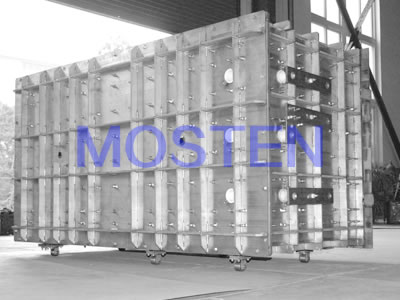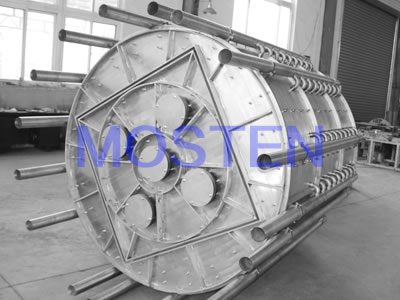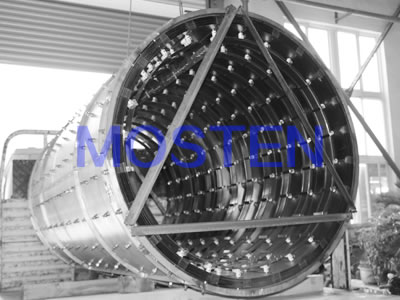Hot Zones
Introduction of Hot Zone
Mosten's hot zones can be used in various vacuum furnaces or other furnaces. We can provide customized hot zone to our clients according to the operating environment and temperature. As a key component of the furnace, the hot zone will affect the performance of the whole system of the furnace. Suitable hot zones will help to improve the quality of the production process, and provide the uniformity of furnace temperature. Suitable hot zones can also reduce the maintenance cost and keep a long service life of the furnace. Therefore, the overall costs of the furnace will be reduced.The hot zone used in high temperature furnace is mainly composed of the body, heat insulation screen, heating element and supports. We produce various types of hot zones including square vertical, square horizontal, circular vertical and circular horizontal. Products requiring heat treatment will be placed on the support frame so that they can be stabilized in the heating area. Because tungsten and molybdenum have very high melting points, they are the most suitable materials for vacuum furnace, crystal growth furnace and sapphire growth furnace. In addition to the hot zone, we also provide the components of the hot zones: heat shield, heating element, support column, gasket, crucible, and fixtures.
Types of hot zone
Hot zones can be divided into two types: one is all-metal hot zone, the other is mixed hot zone.All the parts in the all-metal hot zone are made of metal. Hot zones in high temperature furnace, crystal growth furnace and sapphire growth furnace are all-metal hot zones, which are mainly processed using the metals of Molybdenum, Molybdenum-Lanthanum, TZM, Tungsten and Tantalum. The most commonly used metal is molybdenum (the ambient temperature range of which is generally 1000-2500 ℃ / 1800-4532 ° f). Tungsten is required if the ambient temperature is higher than 2500 ℃, and the metal with ordinary heat resistance, such as steel, can be used if the temperature is lower than 1000 ℃.
Mixed hot zones are the hot zones that not only made up of metal materials but also graphite and ceramics. Since materials like graphite are used in the mixed hot zone, it may cause pollution to the heating body during the process of heating and heat preservation. Therefore, all-metal hot zone is the best choice as furnace component.
Molybdenum-Lanthanum Alloy in Hot Zone / Heating Elements in Hot Zone
If some parts in the hot zone require higher high-temperature strength, better ductility and better durability, we could make the parts using Molybdenum-Lanthanum alloy which is made by doping miscellaneous lanthanum into molybdenum. Molybdenum has very high efficiency in heat reflection. The effect of one layer of molybdenum heat shield is equivalent to that of seven layers of steel heat shield.In the common hot zone, the heating elements are located at the bottom, top, left and right of the hot zone. Heating elements are used to improve temperature uniformity. For the large hot zone, due to its large heating space, heating elements also need to be installed on the back wall and front wall except normal locations. This can ensure uniform temperature.
Application Fields of Hot Zone
All-metal hot zones are applied in the industries of medicine, aviation, electronics technology, metal injection molding, high temperature sintering materials, glass melting, melting and sintering process,and powder metallurgy process.
| The properties of pure metal heating elements | ||||||
| Materials | Melting Point | Density | Electrical resistivity | Temperature coefficient of resistance |
Maximum operating temperature in vacuum |
Allowable surface load |
| Molybdenum | 2600℃ | 10.2 g/cm3 | 0.052 Ω·mm2/m | 471 X 10-5/℃ | 1800 ℃ | 20~40 W/cm2 |
| Tungsten | 3400℃ | 19.6 g/cm3 | 0.051 Ω·mm2/m | 482 X 10-5/℃ | 2400 ℃ | 20~40 W/cm2 |
| Tantalum | 3000℃ | 16.6 g/cm3 | 0.131 Ω·mm2/m | 385 X 10-5/℃ | 2200 ℃ | 20~40 W/cm2 |
Ways of cooling for Vacuum Treatment Furnace
*** Depending on the degree of vacuum, vacuum furnace can be categorized into: low vacuum, high vacuum, and ultra-high vacuum.There are three ways of cooling for vacuum heat treatment furnace: gas cooling, oil cooling and water cooling.
There are two design schemes for gas cooling: one is heating and cooling in the same space, the other is heating and cooling in one space and cooling in another space. The mediums of gas cooling include hydrogen, helium and argon etc. Generally, we use high-purity nitrogen with the purity of more than 99.999% as the medium. In the vacuum furnace, according to the working temperature and product design, the most commonly used metals are pure molybdenum, TZM and molybdenum-lanthanum.
If you would like to purchase hot zones from China, please don't hesitate to Contact Us.





